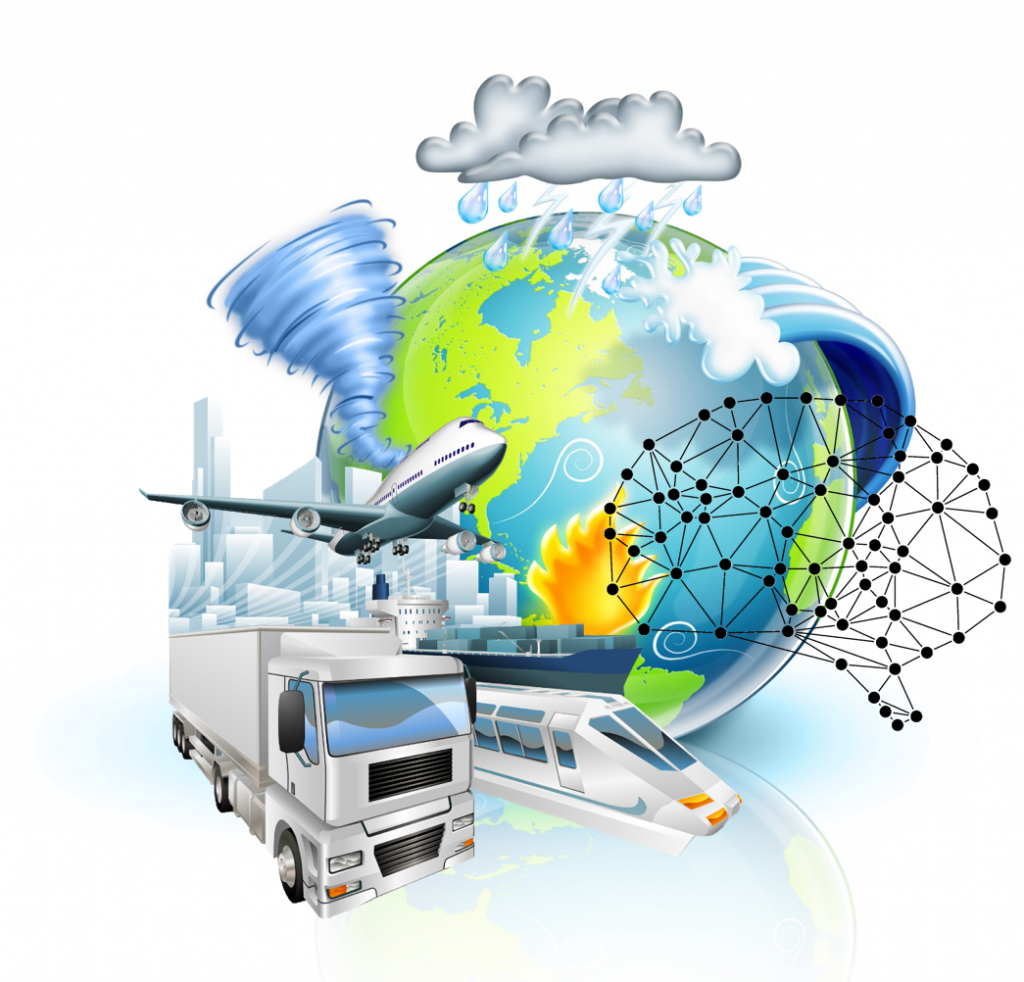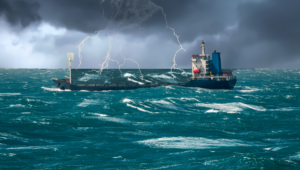Disruptions are anathema to supply chain operations. Despite the best efforts of supply chain professionals, disruptions appear to be increasing. The supply chain risk management firm Resilinc reports disruptions hit an all-time high in 2018 and climate change played a big role in that increase.[1] “When it comes to natural disasters, like hurricanes,” writes Fouad Egbaria (@FEgbariaMM), “the question is not ‘if’ but ‘when’. For manufacturers, natural disasters — whether it’s hurricanes, earthquakes, wildfires, or something else — pose a number of significant hurdles to supply-chain stability.”[1] With natural disasters predicted to increase in both quantity and intensity, companies are looking to artificial intelligence (AI) to get an edge. Failure to confront the climate change challenge is not a viable option for businesses. As Egbaria notes, disruptions caused by natural disasters “can have a deep and long-lasting impact on supply chain stability.”
Predicting disasters using artificial intelligence
Companies could be better prepared for disruptive events if they knew when they were coming and where they would strike. Kayla Matthews believes making such predictions are the next big task for artificial intelligence systems.[3] She might be correct; but, don’t hold your breath. I’m not saying AI won’t eventually be up to the task; but, the fact remains, we’re currently a long way from being able to predict things like earthquakes. Nevertheless, Matthews writes, “Some researchers … think AI might be the key to finally doing it and saving lives in the process.” A more likely near-term use of AI is predicting potentially disastrous events caused by climate change. Matthews notes, “Machine learning plays a role in the weather predictions we get every day, and that same technology can be used to forecast when a hurricane will hit. AI has also proven 30 percent more effective than traditional models at predicting the intensity of hurricanes. This improved accuracy helps people better prepare for the event. A 30 percent improvement is hugely consequential, especially given that just three hurricanes, Maria, Harvey and Irma, impacted at least 26.5 million people in the U.S. in 2017.”
AI’s potential benefit goes beyond pre-event predictions. It can also be used to help with mitigation and recovery. “AI is also showing promise as a way to improve disaster relief,” explains Matthews. “A company called One Concern has created a predictive AI program called Seismic Concern and is also working on similar programs for wildfires, floods and hurricanes.” Accurate AI models can “help leaders make decisions during and after a real event, enabling users to both prepare for and react to an event.” Knowing that short-term weather predictions can be difficult to get right makes some people skeptical about the value of long-term climate change predictions. Nicola Jones (@nicolakimjones) reports, “Researchers have been frustrated by the variability of computer models in predicting the earth’s climate future. Now, some scientists are trying to utilize the latest advances in artificial intelligence to focus in on clouds and other factors that may provide a clearer view.”[4] She continues, “We have a blurry view of the future. It is hard to know if, importantly, a warmer world will bring more low-lying clouds that shield Earth from the sun, cooling the planet, or fewer of them, warming it up.” Because current climate change models can differ widely in their predictions, they provide ammunition for climate change skeptics. Researchers are hoping to change all that by creating extremely reliable climate models using advanced AI techniques. Jones notes, “Not only is AI smart; it’s efficient. And that, for climate modelers, might make all the difference.”
Hoping something “might make all the difference” is cold comfort for business leaders for whom ambiguity is a serious challenge. How do you prepare for unknown events? Some researchers believe help is on the way. Jones reports, “[Chris Bretherton at the University of Washington] makes the bullish prediction that in about three years a major climate-modeling center will incorporate machine learning. If his forecast prevails, global-scale models will be capable of paying better attention to fine details — including the clouds overhead. And that would mean a far clearer picture of our future climate.” In the meantime, despite model differences, the trend is clear. Climate change is occurring and businesses are being impacted.
Leveraging AI today
Geoff Webb, Vice President of Product Marketing at PROS, asserts, “Even if your business isn’t located in an area affected by hurricanes, tornadoes or earthquakes, these natural disasters can still have a significant impact on manufacturers and distributors regardless of local geography. The impact of major disasters can ripple through supply chains and disrupt economies far beyond any localized damage.”[5] In the face of such challenges, he believes business leaders don’t have to wait for advanced climate change models to leverage the benefits of artificial intelligence when responding to natural disasters. He explains, “Even a disruptive event like a natural disaster offer opportunities for smart businesses to earn greater customer loyalty and displace less agile competitors. … More and more, companies are looking at artificial intelligence to spot trends early, and respond to sudden changes in a way that maintains operations and keep the business running.” One of the most important ways cognitive technologies can help businesses facing the consequences of a natural disaster is by helping them understand the perturbative effects of disruptions. Webb explains:
“In the wake of massively damaging events like hurricanes, it can be difficult to keep the supply chain stable and customers happy. AI can enable companies to optimize their eCommerce strategy at all times and help them deliver more consistent experiences with the channel fluidity that is required in the digital era. During natural disasters, brick-and-mortar factories are directly affected. By considering inventory management ahead of a given storm season known for destructive weather patterns, companies can help mitigate disruptions in normal operations before they occur. Using AI-enabled forecasting tools, manufacturers can predict how materials will be impacted by natural disasters and adjust inventory accordingly to prepare. Even harder to predict can be the impact on transport and logistics during a significant disaster event. Anyone who has seen the pictures of freeways flooded during Hurricane Harvey will know that when a major city is hit, transportation can be massively disrupted, fuel supplies run out, and anything moving through that city can be tied up for days or weeks. The ripple-effect on other businesses that require dependent transportation of materials and products is significant, long-term, and hard to predict without the power of AI.”
Cognitive systems, like the Enterra Supply Chain Intelligence System™, can calculate the cascading consequences of disruptions to mitigate risk.
Concluding thoughts
Climate change is already affecting businesses and its impacts will only increase in the years ahead. Nicholas Bahr, global practice leader for operational risk management at DuPont Sustainable Solutions, observes, “Severe weather events or other disasters that can cause a lengthy disruption in operations are bound to occur, so smart companies are taking the time to plan ahead and anticipate those situations.”[6] Cognitive technologies can help in those efforts.
Footnotes
[1] Staff, “Supply chain disruptions hit record high,” Supply Chain Quarterly, 10 December 2018.
[2] Fouad Egbaria, “Mitigating Supply-Chain Risk When Natural Disasters Strike,” MetalMiner, 8 November 2018.
[3] Kayla Matthews, “AI’s Next Challenge: Predicting Natural Disasters, Datafloq, 2 February 2018.
[4] Nicola Jones, “Can Artificial Intelligence Help Build Better, Smarter Climate Models?” Yale Environment 360, 10 December 2018.
[5] Geoff Webb, “Why The Supply Chain Should Leverage AI In The Wake Of Natural Disasters,” Manufacturing.net, 25 July 2018.
[6] Nicholas Bahr, “Don’t Ignore Mother Nature – Plan Now to Ensure Business Continuity When Disaster Strikes,” IndustryWeek, 23 February 2018.





